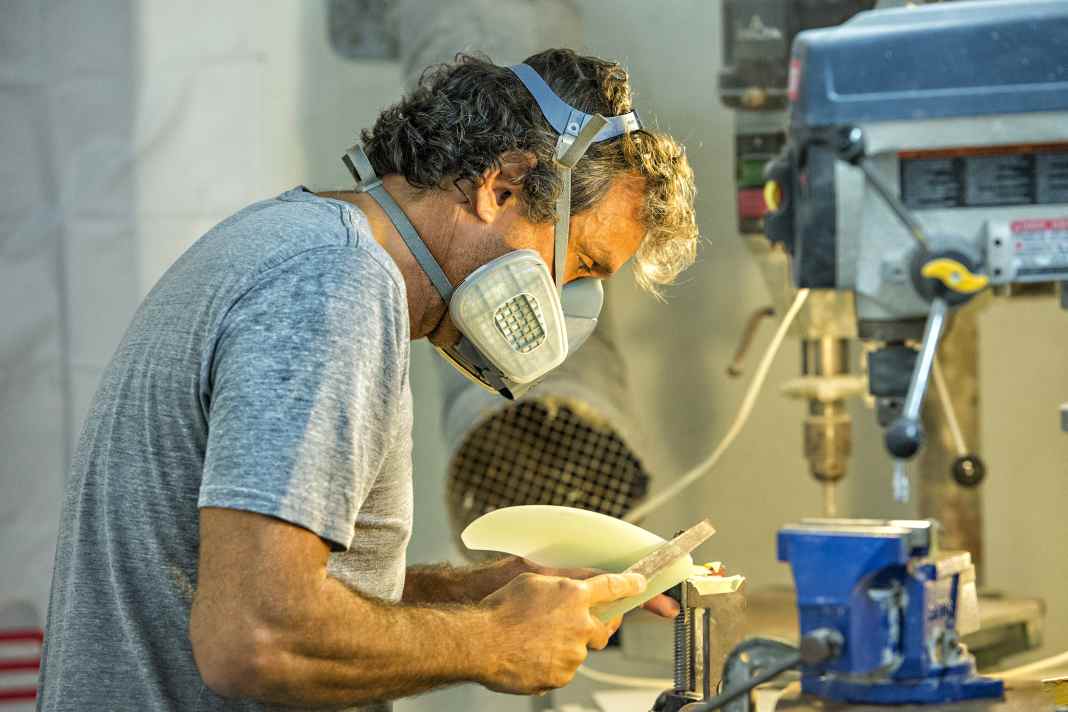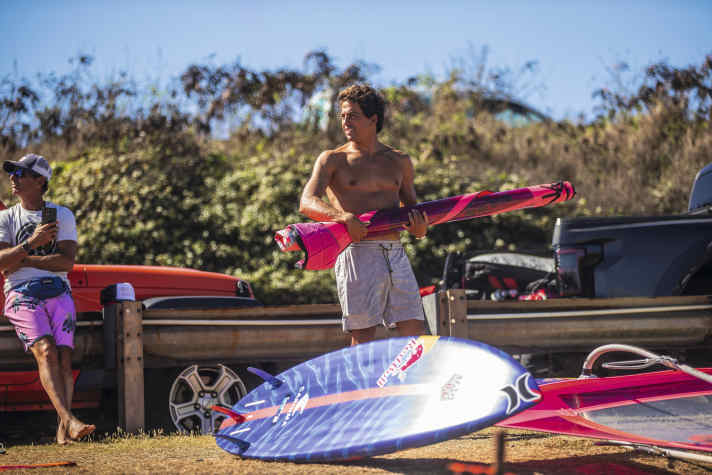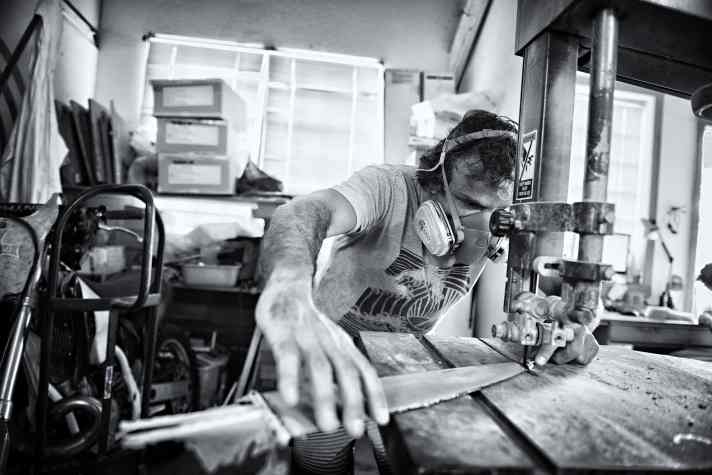





The fins of the Maui Fin Company can be found in many series boards of different brands. MFC was an independent company for almost 40 years, but has now been taken over by FCS, whose fins can be found in almost every surfboard worldwide. Designer Pio Marasco reveals the idea behind it and why fin design doesn't stop even after decades.
Pio, you came to Maui in 1990 and for many years have been the brains behind the designs of MFC fins that are currently used in boards from many manufacturers. Briefly describe the long road you have travelled to get here.
I am Italian and came to Maui in 1990. In 1994, I ploughed my savings into MFC and took over half of the shares from Scott Dickinson, who had co-founded the company in 1986. I started there as his assistant. I swept the floor in the shaping room and wrapped fins in foil. We started building fins with a CNC milling machine back in 1992. We were simply ahead of the times back then, which is why we were able to build fins for Björn Dunkerbeck, Anders Bringdal, Robby Seeger and West Team Germany. In 1999, we started working with the Thai manufacturer Cobra, which continues to this day. I never had a specific technical background, but over the years you simply learn an incredible amount about fin designs, materials and different construction methods - things that help me today.
If you look back and compare the construction of fins then and now - what were the most important milestones?
As I said, the first big step was to build these with a CNC milling machine, the milling machine simply delivers a greater degree of precision. Another milestone was the establishment of a prepreg production line at Cobra. This means that the individual layers of the fins are pre-impregnated, which can save a lot of resin and therefore weight. We can also change the arrangement of the layers in the mould, which has a direct effect on flex and torsion. We have been using this technology since 2002. Of course, we have also made mistakes over the years and things have not worked out. But that's part of the learning process (laughs).

Windsurfing fins have been around for over 50 years. Do you still see room for improvement today or is the topic of fin development actually over?
We have team drivers like Marcilio Browne or Kai Lennywho are constantly coming up with new ideas, there is always new input. For a long time, designers of windsurfing fins cooked their own soup, but new impulses are currently coming from the surfing sector in particular, which are flowing into windsurfing. We are currently working on completely new profiles inspired by surfboard fins. Conversely, there is a lot of expertise that can flow from the windsurfing sector into the fin development of surfboards. Surf pros increasingly want fast fins in order to generate speed on the wave. We have a lot of experience in this area thanks to our windsurfers from the slalom and speed sectors.
It sounds like the music in terms of development is mainly in the wave sector. How do you get feedback for freeride or freerace fins, which probably make up a larger proportion than the wave sector in terms of volume?
We always get feedback in two ways: We test ourselves, because there are also flat water spots with light winds on Maui. We also have team riders, for example in Tarifa or on Lake Garda. And of course, a lot of the feedback also comes from the brand representatives, who equip their boards with our fins and have precise ideas. New profiles and designs are also being created in the freeride sector.

What are the advantages and disadvantages of now being part of a large group like FCS with MFC?
Following the takeover by FCS, the world's largest manufacturer of fins for surfboards, we are now part of a multisport company. In addition to fins for surf and windsurf boards, there are also products for SUPs and, of course, foils. There is knowledge from all areas that can be utilised for our own products. Conversely, FCS naturally gains access to the wind sports market through us. So it's a co-operation that benefits both sides. Of course, some things take a little longer in a large company. But we have a common plan and this was also the deciding factor for me to sell MFC to FCS.
The market for surfboards is huge worldwide and is probably many times bigger than wind sports. Why is a company like FCS, which is even listed on the stock exchange, interested in this?
The market for surfboards is huge, but it is not true that wind sports are small in terms of sales. If you define windsurfing, kitesurfing, foiling and SUP, which in the broadest sense was also created from these sports, together as "wind sports", this market has great weight. In fact, the wind sports market is even slightly larger than the surfing market. Of course, windsurfing is only one part of it. It is therefore understandable that a company like FCS is interested in it.

